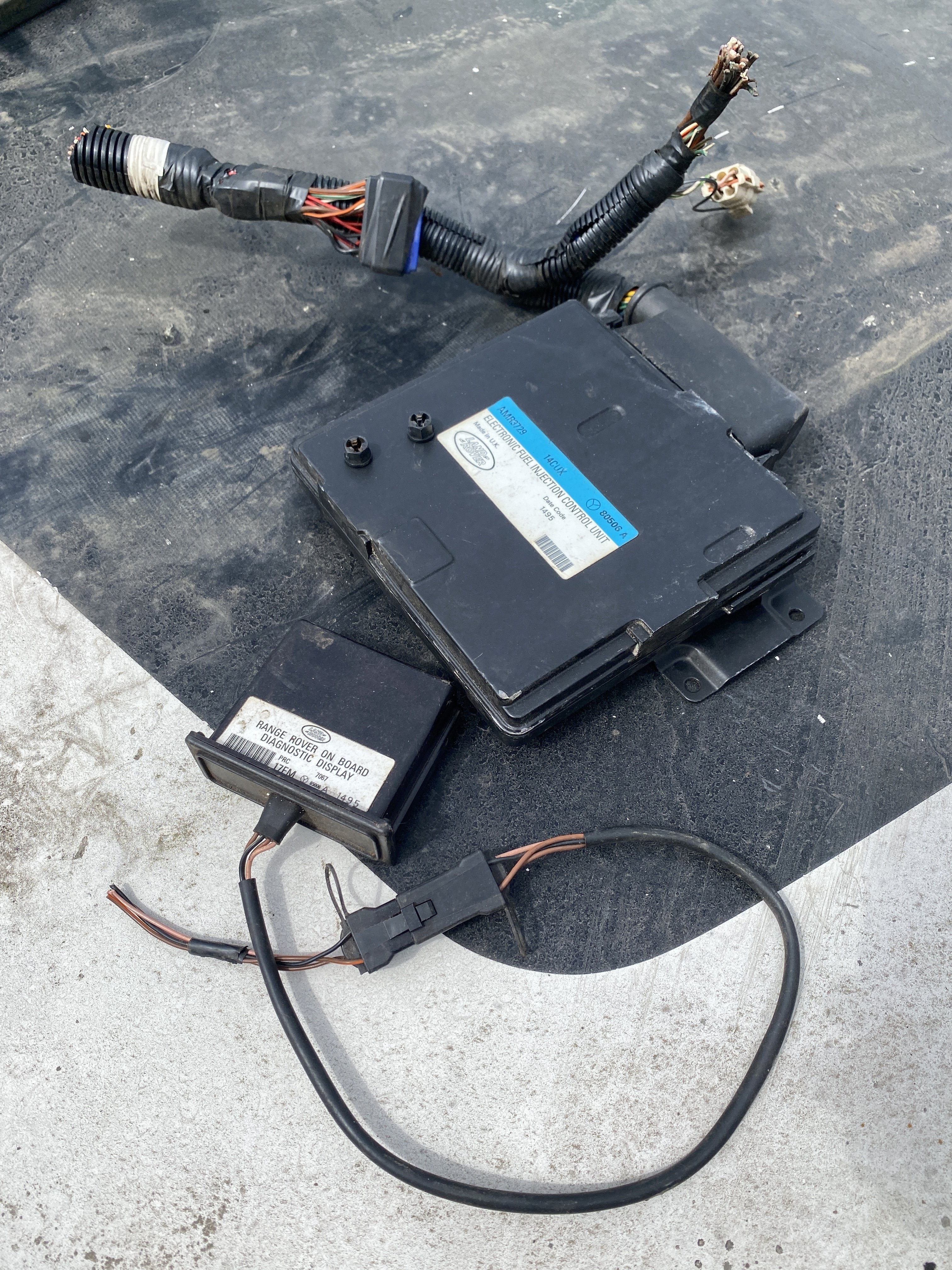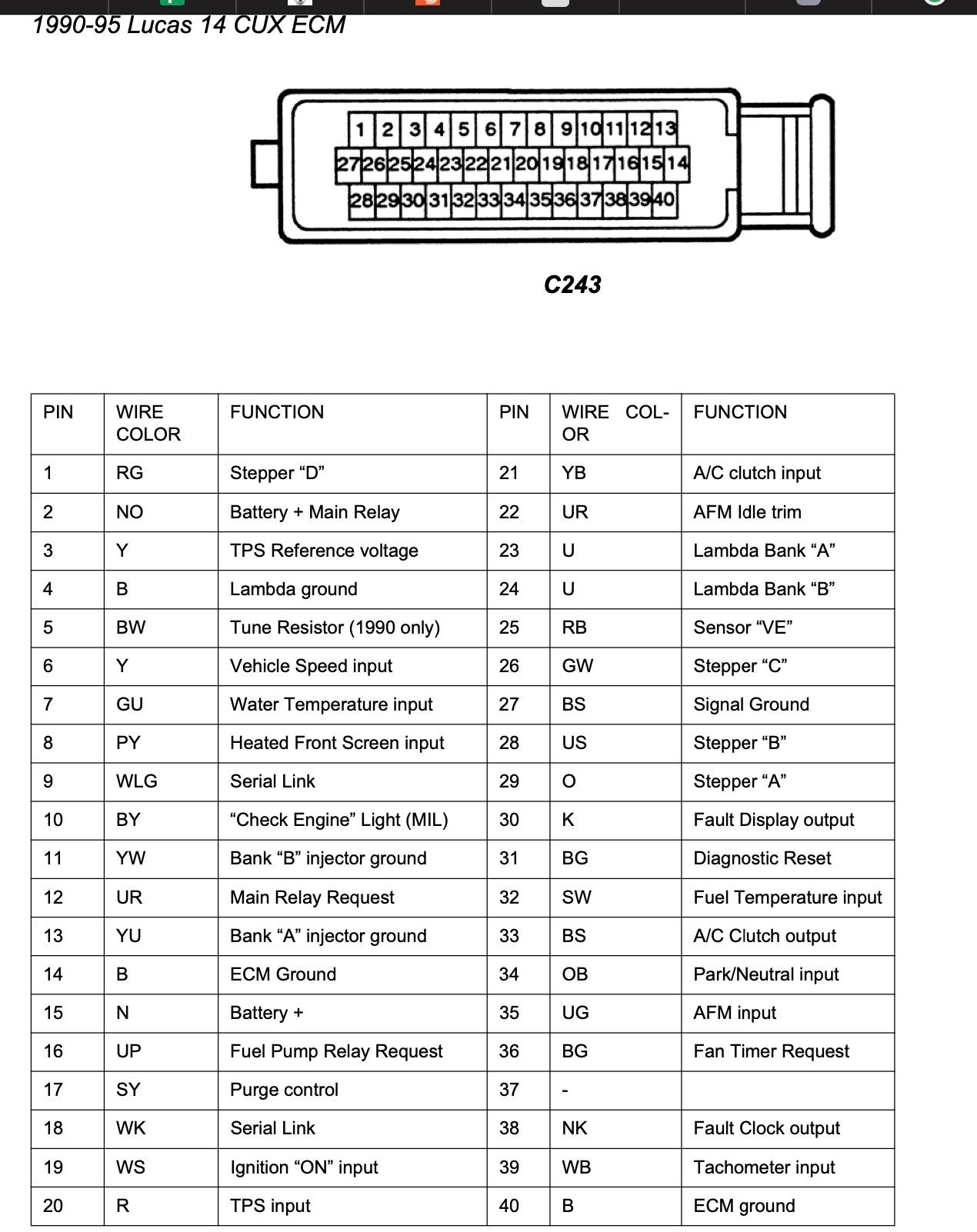For owners of classic Range Rovers (like the 1988 model with a 3.5L engine and 13CU EFI), modern diagnostic tools might seem out of reach. The original 13CU EFI system lacks the OBD2 compatibility we expect in today’s vehicles. However, there’s a solution to bring some diagnostic capabilities to these vintage SUVs: upgrading to a 14CUX ECM and installing a code reader. This guide explains how to adapt your Range Rover for basic engine diagnostics by utilizing a 14CUX ECM and connecting a compatible code reader.
The process involves replacing your original 13CU EFI system with a 14CUX ECM (Engine Control Module). The 14CUX system, while still not OBD2 compliant in the modern sense, offers a diagnostic output that can be accessed with a specific code reader. This upgrade is particularly beneficial for diagnosing EFI system issues that would otherwise be difficult to pinpoint on the older 13CU system. The components needed for this conversion are typically sourced from a later Range Rover Classic or Discovery 1 that originally came equipped with the 14CUX system.
 14CUX ECM Upgrade for Range Rover Classic Diagnostics
14CUX ECM Upgrade for Range Rover Classic Diagnostics
Wiring Your 14CUX Code Reader
Connecting the code reader to your upgraded 14CUX system is relatively straightforward, involving just four wires. You will need a compatible code reader designed for the 14CUX system, such as the Lucas 7067 diagnostic display. Here’s how to wire it in:
- BS (Black/Grey or White wire): Earth Ground. This wire needs to be connected to a reliable ground point in your vehicle. A convenient location is often a chassis ground point. In the example of the Range Rover Classic, a floor ground point under the passenger seat works well. Use a loop connector to secure the wire to the ground point.
- NO (Brown/Orange wire): 12V Power. This wire requires a 12V power source that is live when the ignition is on. Suitable sources in a Range Rover Classic can be found in the center console area. Consider tapping into circuits like the power window rear lockout switch or the rear cigar lighter. While it’s technically possible to draw power from the EFI relays, using a separate circuit can minimize potential interference or issues with the sensitive EFI system wiring.
- NK (Brown/Pink wire): Terminal 38 on the Main EFI Connector. This wire connects to pin 38 of the main connector on the 14CUX ECM. This pin is dedicated to diagnostic communication.
- K (Pink wire): Terminal 30 on the Main EFI Connector. This wire connects to pin 30 of the main connector on the 14CUX ECM, also used for diagnostic communication.
Important Wiring Notes:
- Wire colors can vary depending on the donor vehicle and the specific year and model of the 14CUX system you are using. Always double-check the wire designations on the diagnostic display side of the connector to ensure correct wiring.
- Retaining the connector on the code reader wiring harness is advisable. This allows for easy disconnection of the diagnostic unit if needed in the future.
 14CUX EFI Connector Pinout for Diagnostic Wiring
14CUX EFI Connector Pinout for Diagnostic Wiring
Accessing the 14CUX EFI Connector
The 14CUX ECM and its connector are typically located in the passenger footwell area. Accessing the connector for wiring can be a bit tight, but it’s generally manageable without removing the passenger seat entirely. Moving the seat fully forward usually provides enough space to work.
To connect the wires for the code reader, you’ll need to access the back side of the main EFI connector. After removing the rubber seal and unscrewing the connector, you can insert spare wires (ideally sourced from the donor vehicle’s harness for matching connectors) into the appropriate positions (pins 30 and 38) on the connector. On older vehicles originally equipped with the 13CU system, these positions in the harness might be empty, requiring you to populate them with the new wires.
By completing this upgrade and wiring, you can use a compatible code reader to retrieve diagnostic fault codes from your classic Range Rover’s 14CUX EFI system, significantly aiding in troubleshooting and maintaining your vehicle’s engine performance. This 14cux To Obd2 Ecm Adapter approach, while not true OBD2, provides valuable diagnostic feedback where none existed before.
